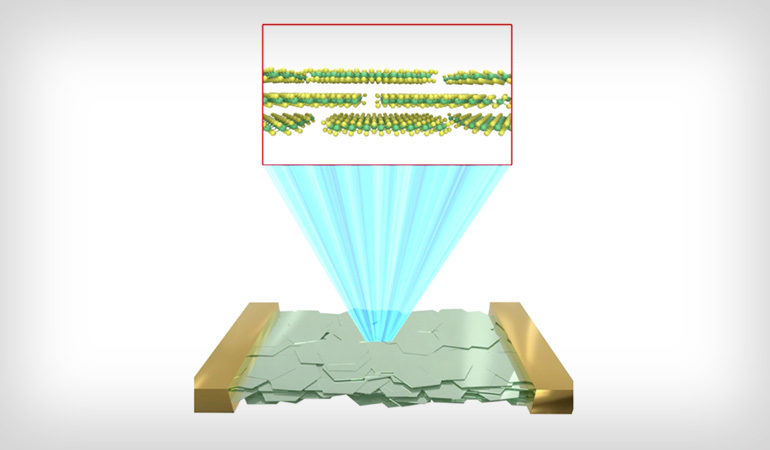Researchers at UCLA created ultrathin films that are just 10 nanometers thick, but which can maintain electrical conductivity, flexibility, and strength. The molecules within the films are held together by non-bonding van der Waals forces, making them highly pliable, and the numerous sheets within the films are able to slide over each other without breaking apart. The films are also breathable and are permeable to water and air. These properties mean that the films are highly suited as a component for health-related wearables, and the resulting wearable creations can easily conform to the shape of the body part they are applied to.
Wearable tech is evolving space. However, finding the right material for a bioelectronic film that can be applied directly to the skin can be challenging. Some materials are limited by poor flexibility and stretchability, and don’t easily fit to the variable shapes and contours of our bodies. Other materials are not breathable, causing sweat to build up, and others cannot handle the presence of such biological fluids.

Creating a material that ticks all (or at least most) of the boxes for wearables is difficult. However, these researchers have achieved some success with this latest material, which consists of a patchwork of incredibly thin sheets made from molybdenum disulfide. The patchwork structure allows the sheets to slide over each other, allowing the material to flex easily and conform to the surface of the skin without breaking.
“Conceptually, the membrane is like a much-thinner version of kitchen cling film, with excellent semiconducting electronic functionality and unusual stretchability that naturally adapts to soft biological tissues with highly conformal interfaces,” said Xiangfeng Duan, one of the developers of the new material . “It could open up a diverse range of powerful sensing and signaling applications. For example, wearable health-monitoring devices built with this material can accurately track electrophysiological signals at the organism level or down to the level of individual cells.”
The researchers have conducted some preliminary proof-of-concept tests with the material to assess its potential as a major component in health wearables, and so far, the results have been promising. For instance, they created a wearable electrocardiogram system that involves small discs of the material being applied to the forearm.
“Our proof-of-concept demonstrations using the van der Waals thin film really just hint at the myriad possibilities for this new material,” said Yu Huang, another researcher involved in the study. “The membrane could serve as the connection for human-machine interfaces, enhanced robotics and artificial intelligence-enabled technologies that connect directly. This could open a pathway to synthetic electronic-cellular hybrids – cyborg-like living organisms with electronic enhancements.”
Here’s an animation showing how van der Waals thin films work. On the left, the layered patchwork design enables the membranes to stretch and flex over irregular geometries. On the right, a film with single continuous layers breaks upon stretching.:
Studies in Science: Highly stretchable van der Waals thin films for adaptable and breathable electronic membranes
Via: UCLA
